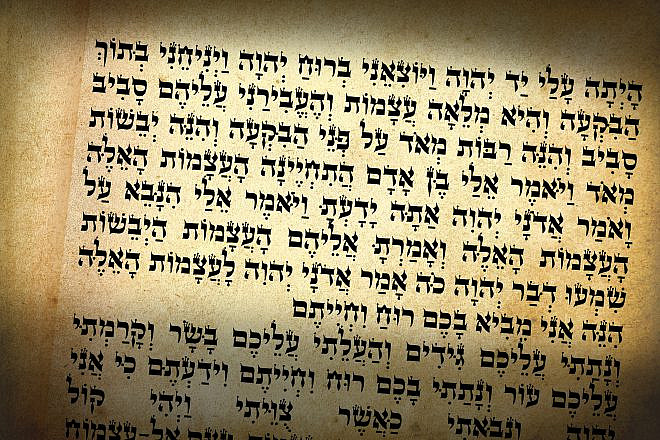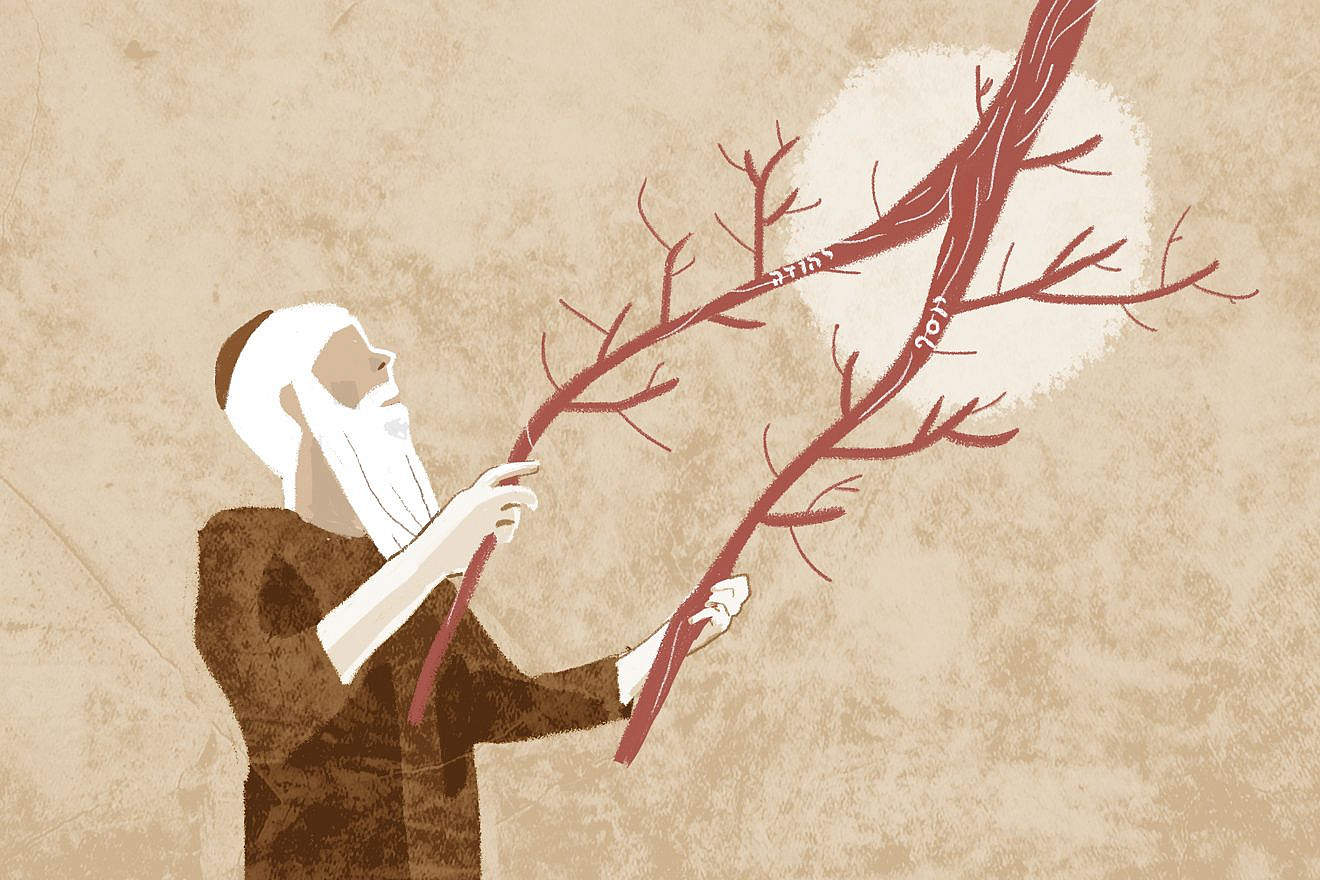The months leading up to Hamas’s Oct. 7 massacre and the ensuing war were characterized by bitter internal conflict that challenged the image of Israel’s internal stability: Reservists threatened to refuse orders, high-tech heroes threatened to take their money out of Israel, lawmakers were assaulted in the streets, protestors routinely blocked the main highway running through Tel Aviv.
However, when we view the events of the last nine months through a biblical lens, we can discern the unfolding of an age-old story with a profoundly positive ending.
This story is rooted in an ancient struggle between two personality archetypes in the collective Jewish psyche: Yosef and Yehuda. They were brothers. Both were sons of our forefather Yaakov, but Yosef’s mother was Rachel and Yehuda’s mother was Leah. Among Yaakov’s 12 sons, these two stood out as leaders. Each embodied a distinct set of values.
The Yehuda archetype is dedicated to tradition, to preserving our way of life and our wisdom, and to passing these on to the next generation. Yehuda is devoted to our ancestral traditions, to our land, to our Torah and to our God. In the Biblical narrative at the end of the book of Genesis, it was Yehuda’s self-sacrificing devotion to his father Yaakov that convinced Yosef to reveal himself to his brothers. When Yaakov’s family went down to Egypt, Yaakov sent Yehuda first in order to establish the institutions dedicated to teaching the Abrahamic faith to the children of Israel and preventing their assimilation into Egyptian culture.
Throughout the centuries, the Yehuda archetype living through us enabled us to cling to our tradition, despite incredible hardship.
Today, this archetype thrives in sectors of the Jewish world committed to tradition and its perpetuation through the family and the nation. The center of Yehuda-energy is Jerusalem, the ancient spiritual center of the Jewish people and home to God’s dwelling place on Earth.
Conversely, Yosef is the innovator and administrative genius who saved Egypt from the ravages of a famine. He began life, like his other brothers, as a shepherd living in the hills, but he remolded himself to look Egyptian and to become a leading contributor to the most advanced civilization on Earth. Yosef’s incredible skills helped Egypt weather famine and he provided for the material needs of his extended family, the children of Israel.
The Yosef archetype is embodied in contemporary Israel by the cosmopolitan city of Tel Aviv, the hub of the startup nation and the economic engine of the country. Yosefian Jews look outward towards the larger world. They are adept at mingling with and contributing to non-Jewish cultures globally, advancing science, technology and all aspects of human culture. They are adept at building institutions and getting things done.
Both archetypes are essential components of the Jewish people and the modern State of Israel. The Zionists who built the nation’s infrastructure embodied the Yosef archetype. Theodore Herzl, the founder of the modern Zionist movement, and the Zionist pioneers who followed him left tradition behind to build a modern country. Despite facing incredible challenges and adversity, their entrepreneurial and organizational skills and talent for improvisation were the foundation for Israel’s prosperity and material success.
In essence, the “Yosefs” of the Jewish nation created the modern State of Israel and continue to dominate its central institutions. However, it is the “Yehuda” archetype that has fueled Israel’s demographic and spiritual resurgence. While other first-world countries have witnessed a decline in attachment to tradition, Israel’s youth are more traditional, with a growing percentage of tradition-oriented Jews and a resurgence of Torah study, even among the non-religious. Despite Israel’s high levels of working women and women with advanced degrees, Jews in Israel have a soaring birth rate of 3.2 births per woman, more than double the OECD average.
The issue of judicial reform exposed the deep cultural rift between the Yehuda and Yosef camps within Israeli society. Each side felt that something existential was at stake. When the current government made this an initial legislative priority, it was truly a re-enactment of Yehuda confronting Yosef (Genesis 44:18).
According to the Midrash (Tanchuma), this confrontation was like a lion (Yehuda) confronting an ox (Yosef), and the Midrash describes in frightening detail the violent destruction that each side threatened to inflict on the other. The ugliness of the recent conflict is part of the biblical story.
In Israel’s history, this conflict led, in the 10th century BCE, to the splitting of the Israelite kingdom into two separate nations. However, the story of these two brothers in our time has taken a different direction.
On Oct. 7, the same people who were in the streets protesting the government were among the first to put on their uniforms and head to Gaza as warriors fighting for all of us. The same high-tech executives who a few weeks earlier were threatening to take their money out of Israel now approached the government and asked how they could help. People who had been out in the streets protesting the government are now fighting shoulder-to-shoulder with people who strongly support the government. There has been a remarkable coming together of Am Yisrael.
For insight into where this reunification is leading, we have a clear prophetic message in the book of Ezekiel, chapter 37.

This chapter begins with the prophecy of dry bones coming to life.
Subsequently, in the same chapter, Ezekiel is instructed to inscribe two sticks, one with “Yehuda” and one with “Yosef” and to bring them together so that they are one in his hand.
The first part of third chapter was fulfilled in the rebirth of the Jewish state. Just as in Ezekiel’s vision of the dry bones coming to life, a new spirit reinvigorated an exiled and oppressed Jewish people and reconnected us to each other and to our once dry and barren land, breathing new life into both.
Since Oct. 7, when the two conflicting brothers came together, the second prophetic teaching of this chapter was fulfilled. The two sides have become one.
For those eager to glimpse the next act in this unfolding drama, chapter 37 of Ezekiel concludes with a promise of lasting peace and prosperity, with God’s sanctuary residing among the Jewish people. This prophecy provides us with hope for what lies ahead. So stay tuned, the best is yet to come.
The ideas presented here originate with my rav and teacher, Rav Daniel Kohn of Bat Ayin.


























